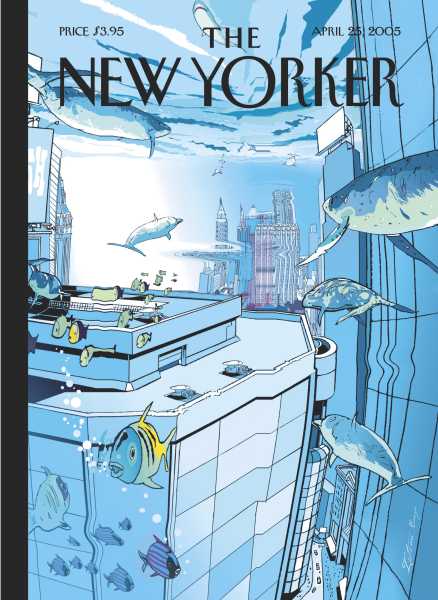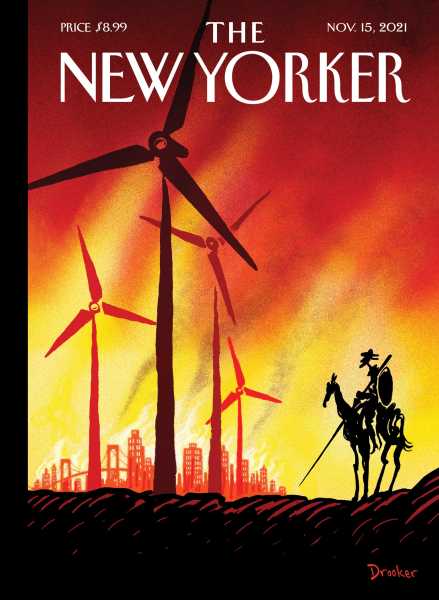
Save this storySave this storySave this storySave this story
News cycles, by nature, tend to document crises as discrete events. Suffusive emergencies—like the climate crisis—are captured mostly in the accelerating pace and frequency of such coverage. The increasing regularity of droughts, heat waves, wildfires, and deadly floods can remind us that our planet is rapidly warming and that disaster, in many ways, is already upon us—but also, not entirely. In June, when smoke from wildfires in Canada filled New York City, Carolyn Kormann wrote, “We keep experiencing things that are unprecedented, worse than anything anyone can remember, even as we’re told that they will become common.”
It can be difficult to capture the whole of a crisis in which we’re being immersed: a crisis we experience collectively, as a planet, and individually—in Bangkok, California, the U.K., Pakistan, and Louisiana’s Atchafalaya Basin. In his new cover for the July 31, 2023, issue, Christoph Niemann depicts the urgency of the disaster, an urgency that demands we wake up from our complacency. I talked to the artist about existential crisis, hope, and responsibility in a warming world.
Do you experience climate despair, and, if so, how do you handle it?
I absolutely do. I don’t have a great coping mechanism. With covid, I found that diving into articles about the immune system, or the science of vaccines at least gave me some semblance of hope. But, on the topic of climate change, I fear a scientific breakthrough—whatever it might be—won’t be able to save the planet.
What led you to this image when trying to capture this moment in time?
In my mind, catastrophes happen with a bang, after which, one has to deal with the fallout. You might see it coming, but, before it hits, everything is fine (think meteors and dinosaurs.) This situation is unfolding right now. There are dire consequences for all of the people who suffer from heat and extreme weather, but, at the same time, the crisis is still in progress. From what I’ve read, I think that in the future we’ll look back on this summer as comparatively cool. It’s like the time before the big meteor hits, when there’s a buildup of smaller pieces raining down.
You have lived in New York City, but you’re now based in Germany. Do Germans differ from Americans in their approach to curbing greenhouse-gas emissions?
The approaches are pretty similar, though maybe the consensus that the phenomenon is real and man-made is a tad more widespread here in Germany. Yet, even in Germany, there’s a wide gap in public opinion as to how radical the necessary intervention measures should be. This might just be anecdotal evidence, but I feel that the topic is covered more consistently in the German press. But that doesn’t keep an alarmingly large proportion of the population from being convinced that it’s all just made up. As with many other issues, I see a bigger contrast between the opinions in affluent cities and poorer rural areas than a contrast between countries.
You’ve travelled all over the world, including to the North Pole. How do you reconcile travel with ecological awareness?
I guess long-distance flights were just as bad for the climate fifteen or twenty years ago as they are now, but it sure didn’t feel like it then. At the time, I didn’t really have any qualms about flying across the Atlantic for just a few days. I’m still far from a model citizen in that regard, but I travel to New York a lot less than I used to, even though I miss it badly. I don’t take any short-haul flights anymore. Of course, it helps that we’ve many modern, fast trains in Europe, and travelling by train happens to be my favorite mode of transportation.
For more covers about climate change, see below:

“Underwater,” by Istvan Banyai

“The Real Emergency,” by Barry Blitt

“The Impossible Dream,” by Eric Drooker
Find Christoph Niemann’s covers, cartoons, and more at the Condé Nast Store.
Sourse: newyorker.com






